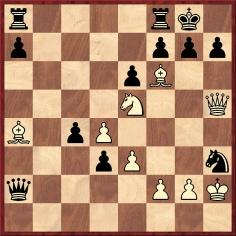
Edward Winter
We wish to compile a list of games (mainly from tournaments and matches) whose moves it has so far been impossible to find. One of the most striking cases is Rubinstein v Alekhine, Vilnius, 1912. In instances such as Capablanca v Teichmann, San Sebastián, 1911 part of the game-score is known. Other examples of significant gaps will be welcomed.
(3192)
Mark Nieuweboer (Moengo, Surinam) points out a report in Alexander Münninghoff’s book on Max Euwe (pages 155-156 of the Dutch original and page 112 of the English edition) that in 1935 the Dutchman played, in preparation for his world championship contest against Alekhine, a secret ten-game match against Rudolf Spielmann. Below is the relevant text, for which no corroborative source is supplied by the book:
‘… just before the final secondary school exams he met Spielmann for a drawing-room match. This latter piece of practical training went quite badly for him; we don’t know whether he found it hard to concentrate because of his schoolwork or whether he had underestimated Spielmann, who was clearly past his prime as a chessplayer, but the fact remains that the peripatetic Austrian veteran claimed this secret ten-game match in fairly superior style with 6-4 (+4 –2 =4).’
None of the games would seem to have been published.
(3194)
See, however, C.N. 4174 in Secret Chess Contests.
Below is a quintet of positions submitted by readers. The common theme is that in each case it has so far proved impossible to find the full game-score.

White to move
In C.N. 5604 Javier Asturiano Molina (Murcia, Spain) asked about an early Nimzowitsch game with a spectacular finish (1 Be8), which the master published on pages 32-33 of his booklet Kak ya stal grosmeysterom (Leningrad, 1929):
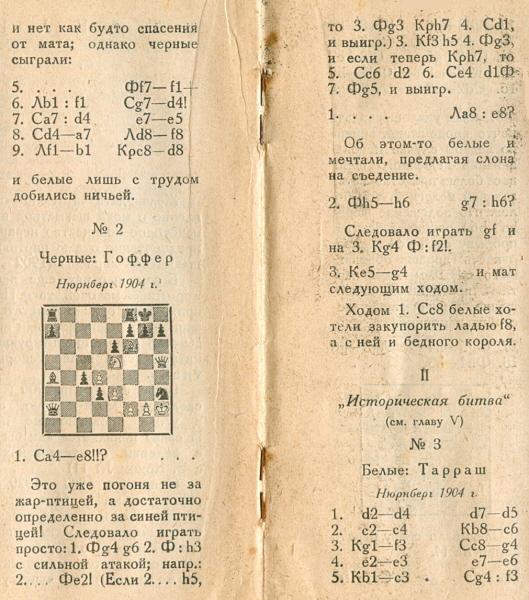
The heading states that the game was played in Nuremberg in 1904 and that Black was ‘Hoffer’. We know of nothing to suggest that Leopold Hoffer was meant. When the position was given on page 62 of Heft 11 of the Baltische Schachblätter, 1908, Black was identified as ‘H. Hofer’, and the game was dated 1907:
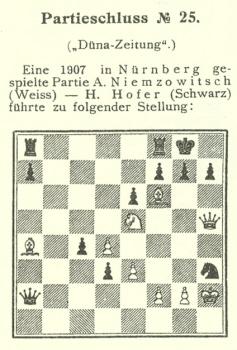
In C.N. 5610 Hans-Georg Kleinhenz (Munich, Germany) wrote:
‘I have found the ending in two 1905 sources (Deutsches Wochenschach, 15 January, page 24, and L. Bachmann’s Schachjahrbuch für 1905, I. Teil, pages 90-91), so the date “1907” given in the Baltische Schachblätter is definitely wrong. Deutsches Wochenschach stated that the game was played “kürzlich in Nürnberg”, while Bachmann dated it as “Ende 1904 zu Nürnberg”. In both cases Black was named as “H. Hofer”. Additional analysis was published in the “Briefwechsel” on page 47 of the 29 January 1905 issue of Deutsches Wochenschach, showing that Black would have won after 2...gxf6 (instead of 2...gxh6) 3 Ng4 Qxf2.
Neither source gave the complete game.’
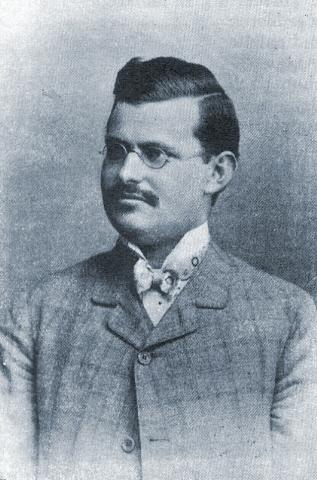
Aron Nimzowitsch
A contribution from Christian Sánchez (Rosario, Argentina) in C.N. 8392:
‘Page 15 of the Düna Zeitung, 22 January (4 February) 1905 gave the conclusion of Nimzowitsch v Hofer:’

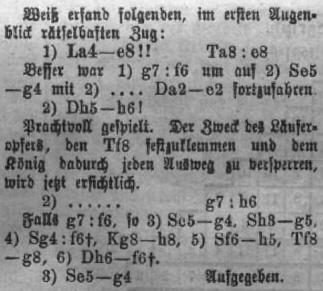
As regards the earlier source, Peter Anderberg (Harmstorf, Germany) provides the relevant part of page 24 of the Deutsches Wochenschach, 15 January 1905, as well as the comments published on page 47 of the 29 January 1905 issue:


Siegfried Hornecker (Heidenheim, Germany) asked in C.N. 5746 whether it was possible to unearth the full score of the game Simagin v Bronstein, Moscow championship, 1947. The famous conclusion was:
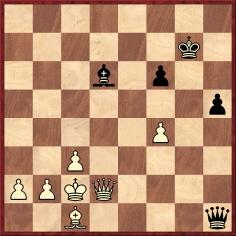
1…h4 2 Qxd6 Qg2+ 3 Kb3 h3 4 Qd7+ Kg8 5 f5 h2

6 Bg5 h1(Q) 7 Qe8+ Kg7 8 Qg6+ Kf8 9 Qxf6+ Kg8 10 Qd8+ Kg7 11 Qe7+ Kg8 12 Qe8+ Resigns.
In no source, including books by and about Simagin, have we seen the complete game. As mentioned in C.N. 5760, Jurgen Stigter (Amsterdam) provided pages 156-158 of the 6/1947 issue of Shakhmaty v SSSR, which included a crosstable of the Moscow, 1947 match-tournament and the moves of a draw between Simagin and Bronstein. Regarding the game being sought, however, only the conclusion was published, with Simagin’s notes.
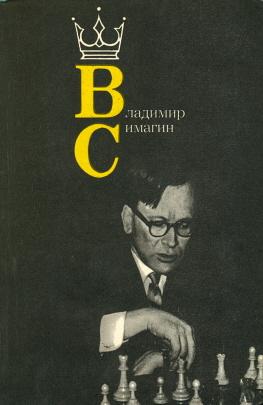
The front cover of the 1981 monograph on Vladimir Simagin by S.B. Voronkov
Another enquiry from a reader, Efstratios Grivas (Athens), was presented in C.N. 6050. He asked whether the full score is available of a game between L. Pachman and K. Hromádka which reached this position:
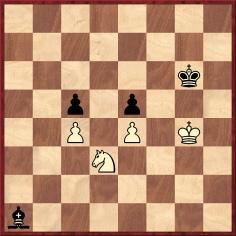
White to move
See, for example, pages 196-197 of Pachman’s Chess endings for the practical player (London, 1983), which stated that the position occurred ‘just before the adjournment of a game that was important to me. It was played in the Championships of Prague in 1944’. Instead of the manoeuvre 1 Ne1, 2 Nf3 and 3 Nh4+, Pachman chose 1 Nxc5, to which he appended two question marks. The game was then agreed drawn, at his proposal.
We have not found the complete game in any contemporary source, including the 1944 volume of the Prague-based magazine Šach.
Lodewijk Prins v Victor Soultanbéieff at Hastings, 1949-50 (Premier Reserves) was the game mentioned by Tony Foley (Passage West, Ireland) in C.N. 6258. Soultanbéieff gave only the conclusion on pages 169-170 of Le maître de l’attaque (Paris, 1974):
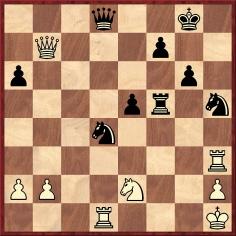
34...Qf6 35 Ng3 Nxg3+ 36 Rxg3 Ne2 37 Rdg1 Rf1 38 b4 Qf4 39 R3g2
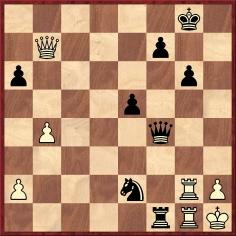
39...Qf2 40 Qc8+ Kg7 41 Qc5 Rxg1+ 42 Rxg1 Qf3+ 43 Rg2 Qf1+ 44 Rg1 Ng3+ 45 hxg3 Qh3 mate.
An illustration from page xviii of Internationaal Schaaktournooi Zaanstreek 1946 by W.A.T. Schelfhout and C. Kottnauer (Amsterdam, 1946):
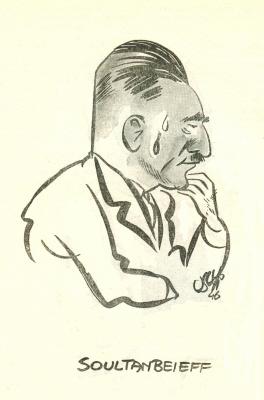
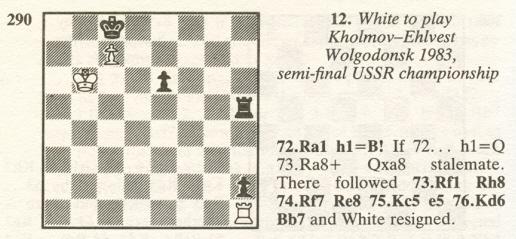
The above comes from page 186 of Chess Curiosities by Tim Krabbé (London, 1985), and in C.N. 6463 Claus van de Vlierd (Oldenburg, Germany) asked whether the full game-score is available.
The various databases break off the Kholmov v Ehlvest game in this position, after 40...b5:

See also pages 916-917 of the October 1996 issue of EG, which states that the score only as far as move 42 was given in the 1/1984 issue of Shakhmatny byulleten.
This article originally appeared at ChessBase.com and appears his with small changes.
From Javier Asturiano Molina (Murcia, Spain):
‘What information is available about the mysterious game Edward Lasker v Capablanca, Berlin, 1911? The final moves of this “unknown” game (a draw, but Capablanca could have won) were given by Edward Lasker in his book Chess Secrets I Learned from the Masters (page 131) and were also discussed in the 8/1995 New In Chess (page 82). It is absent from the various collections of Capablanca’s games, but has the complete score ever been published?’
The position given in Lasker’s book is as follows:
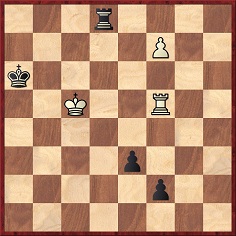
Now Lasker (White) continued 1 f8(Q) Rxf8 2 Rxf8 e2 (2…Kb7!) 3 Kc6 Ka7 4 Rf7+ Ka6 5 Rf8 Ka5 6 Kc5 Ka4 7 Rc4+ Kb3 8 Rf3+ Kc2 9 Rxf2 Drawn.
Had this drawing motif already occurred before 1911?
Lasker wrote in his book that Capablanca ‘thrilled me by his very gracious consent to play an individual game with me’, but did not indicate the rate of play. We have found nothing about their meeting in such contemporary magazines as the Deutsche Schachzeitung and Deutsches Wochenschach.
(2748)
To the Chess Notes main page.
To the Archives for other feature articles.
Copyright: Edward Winter. All rights reserved.